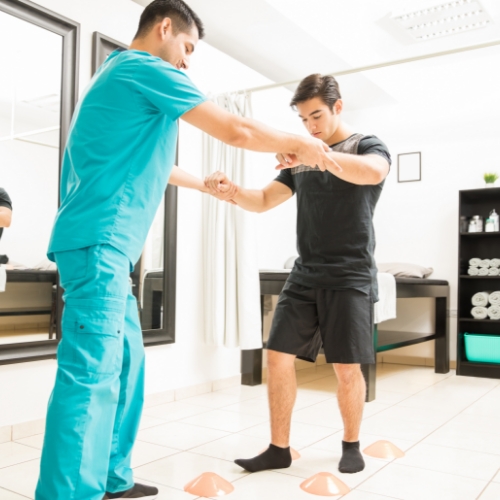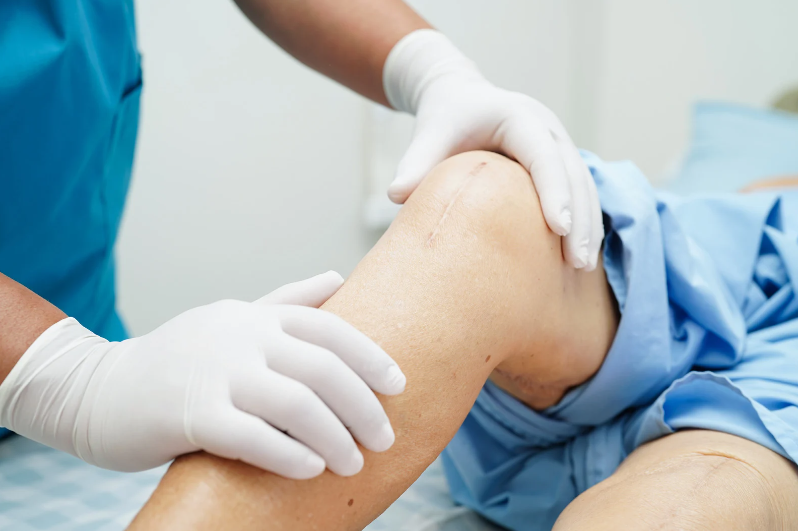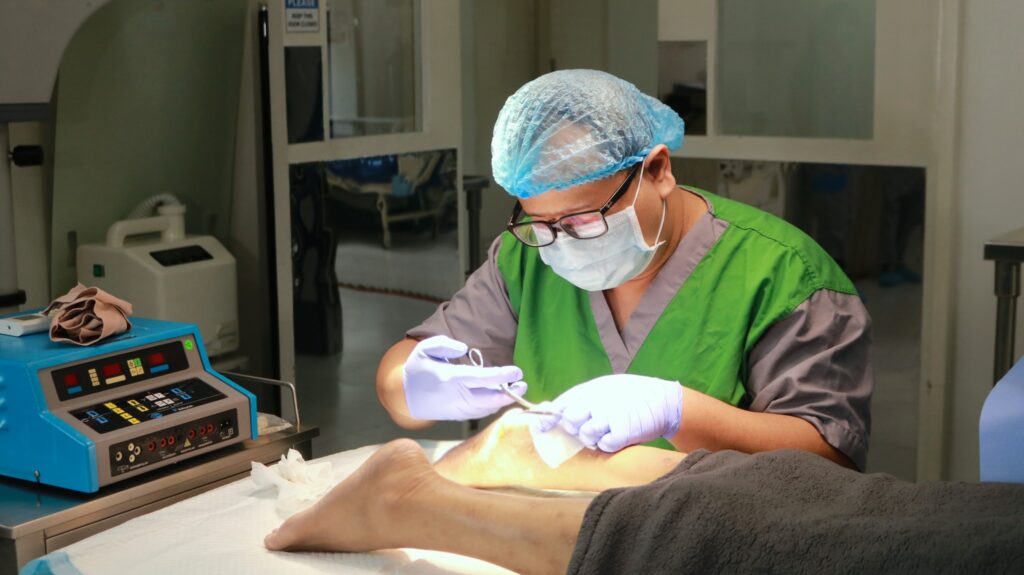Understanding Balance and Gait Disorders
Balance and gait disorders affect the way individuals stand, walk, and maintain stability. These conditions can result from a variety of causes, including neurological disorders such as Parkinson’s disease, stroke, or peripheral neuropathy, as well as musculoskeletal issues like arthritis, joint injuries, and muscle weakness. Age-related changes in muscle strength, vision, and reflexes also contribute significantly to balance challenges. Individuals with these disorders often experience unsteadiness, difficulty walking in a straight line, and frequent loss of balance. This can increase the risk of falls, which are a leading cause of injury among older adults. Recognizing early signs such as dizziness, shuffling gait, or slow walking can prompt timely intervention. Addressing these issues early with professional care can significantly improve quality of life and prevent complications.
Balance and gait disorders not only affect physical health but also impact confidence and independence. People may begin avoiding certain activities or environments due to fear of falling. This avoidance can lead to decreased social interaction, physical deconditioning, and even depression. Professional evaluation helps identify the underlying causes of balance issues, enabling targeted treatment. The right therapy can restore confidence in movement, encourage active lifestyles, and reduce fall risk. In Fishers, IN, specialized clinics focus on comprehensive assessment and treatment plans tailored to individual needs. Access to experienced physical therapists and modern rehabilitation programs makes a significant difference in achieving lasting improvements. Understanding the scope of balance and gait disorders sets the stage for effective intervention and recovery.
Importance of Early Assessment and Diagnosis
Early assessment and diagnosis are crucial for successful management of balance and gait disorders. Timely evaluation allows healthcare professionals to pinpoint the underlying causes, whether neurological, musculoskeletal, or vestibular in nature. Comprehensive assessments often include medical history review, physical examinations, and detailed gait analysis. This process helps therapists design treatment plans that target specific weaknesses or functional impairments. In addition, early intervention reduces the risk of falls, injuries, and secondary complications, which can be costly and debilitating. Clinics in Fishers, IN, provide state-of-the-art diagnostic tools to ensure accurate evaluation of each patient’s condition. Patients who receive early treatment often regain mobility faster and experience fewer setbacks.
Accurate diagnosis also helps identify whether the disorder is progressive or temporary. Understanding the progression allows clinicians to anticipate future challenges and adjust therapy accordingly. Early intervention can prevent minor balance issues from escalating into severe mobility problems. Specialists also educate patients and caregivers about safety measures and preventive strategies. These proactive steps create a supportive environment, empowering patients to take an active role in their recovery. Choosing a clinic that prioritizes early assessment ensures that treatment is personalized and effective. This foundation of care is essential for restoring confidence and promoting long-term independence.
Comprehensive Treatment Approaches
Balance and gait disorders treatment in Fishers, IN, involves a combination of physical therapy, assistive devices, and targeted exercise programs. Physical therapy focuses on improving strength, coordination, and stability, which are critical for safe mobility. Therapists guide patients through structured exercises that enhance balance, core strength, and flexibility. For individuals with inner ear or vestibular issues, vestibular rehabilitation can correct dizziness and spatial disorientation. In addition, assistive devices such as canes, walkers, or custom orthotics provide support and reduce fall risk. These tools are carefully selected based on each patient’s condition and mobility goals.
Tailored exercise programs complement clinical treatment, emphasizing functional movements used in daily life. Patients practice walking, stair climbing, and transitional movements to build confidence and reduce instability. Consistent therapy strengthens muscles, improves reaction times, and enhances overall coordination. Clinics in Fishers, IN, also focus on patient education, teaching techniques for safe movement and fall prevention at home. Combining professional guidance with home-based exercises ensures continuous progress. Patients benefit from a holistic approach that addresses both physical limitations and lifestyle adaptations. This comprehensive strategy maximizes recovery and empowers individuals to regain independence.
Advanced Therapeutic Techniques
Modern balance and gait rehabilitation often incorporates advanced therapeutic techniques to enhance outcomes. Technology-assisted therapies, such as treadmill training with body-weight support, motion capture analysis, and virtual reality balance exercises, provide real-time feedback and motivation. These methods enable therapists to monitor movement patterns accurately and make precise adjustments. Multidisciplinary care is another cornerstone of effective treatment, involving physical therapists, occupational therapists, neurologists, and other specialists. Collaborative care ensures that every aspect of the disorder is addressed, from muscle strength to sensory integration.
Home exercise programs are designed to maintain progress outside the clinic. Patients learn exercises that can be safely performed in daily life, promoting continuous improvement. Education on posture, movement mechanics, and environmental awareness further reduces fall risk. Regular follow-up visits allow therapists to track progress, refine treatment plans, and introduce new challenges as patients advance. In Fishers, IN, access to clinics offering these cutting-edge therapies makes a significant difference in recovery speed and quality. Patients experience greater confidence, improved balance, and enhanced overall mobility through these innovative approaches.
Preventing Falls and Promoting Safety
Preventing falls is a critical component of balance and gait disorder management. Environmental modifications, such as removing loose rugs, installing grab bars, and ensuring adequate lighting, create safer living spaces. Proper footwear with supportive soles can improve stability, while lifestyle changes including strength training, flexibility exercises, and healthy nutrition support overall balance. Patients are taught strategies for safe movement, such as pacing, using assistive devices correctly, and avoiding risky surfaces. Ongoing monitoring ensures that progress is maintained and adjustments are made when necessary.
Education plays a key role in fall prevention. Patients and caregivers learn how to recognize potential hazards, respond to dizziness, and practice safe techniques during daily activities. Community resources in Fishers, IN, such as senior centers and wellness programs, provide additional support for maintaining mobility and independence. Empowering individuals with knowledge and practical skills encourages proactive engagement in their recovery. Consistent reinforcement of safety strategies significantly reduces the likelihood of falls and injuries. Through these measures, patients experience greater confidence in movement and a higher quality of life.
Patient Experience and Accessibility in Fishers, IN
Clinics offering balance and gait disorders treatment in Fishers, IN, provide patient-centered care tailored to individual needs. Experienced therapists develop personalized programs that address specific mobility challenges and functional goals. Patients benefit from modern facilities equipped with advanced rehabilitation tools, supportive staff, and flexible scheduling. Accessibility is enhanced through outpatient therapy options, making it easier for adults and seniors to receive consistent care. Insurance coverage and payment plans ensure that high-quality treatment is available to a wider range of patients.
Personalized care extends beyond therapy sessions. Patients receive guidance on exercises, fall prevention, and lifestyle modifications that support long-term recovery. Supportive communication between therapists, patients, and families fosters collaboration and confidence. Access to specialized clinics in Fishers, IN, ensures that individuals facing balance and gait challenges receive the attention and expertise necessary for effective treatment. The combination of comprehensive care, modern technology, and personalized support helps patients regain independence and enjoy improved mobility.
Frequently Asked Questions (FAQ)
What causes balance and gait disorders in adults and seniors?
Balance and gait disorders can result from neurological conditions, musculoskeletal issues, inner ear problems, medications, or age-related changes in strength and reflexes.
How long does treatment usually take to see improvement?
Treatment duration varies depending on the severity and underlying cause, but most patients begin noticing improvements within a few weeks to a few months with consistent therapy.
Are balance and gait disorders completely reversible?
While some underlying conditions may be progressive, many patients achieve significant improvements in mobility, stability, and confidence through targeted therapy and exercises.
What types of exercises are most effective for improving stability?
Balance exercises, strength training, core strengthening, vestibular rehabilitation, and functional movements like stair climbing and walking drills are commonly used to improve stability.
How can family members support loved ones undergoing treatment?
Family members can provide encouragement, assist with home exercise programs, help modify the home environment for safety, and accompany patients to therapy sessions for support.
Are there risks associated with physical therapy for balance issues?
Physical therapy is generally safe, but therapists carefully tailor exercises to each patient’s abilities and monitor progress to minimize risk. Occasional mild soreness may occur as muscles strengthen.







